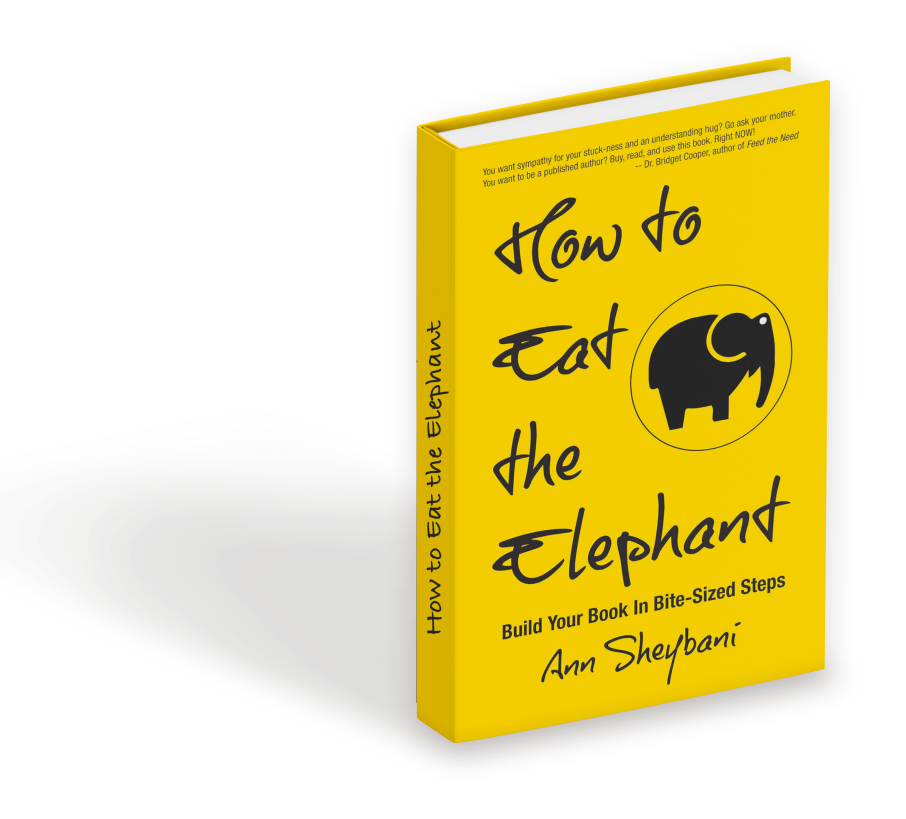Many of my clients want to include personal stories in their book, often because they’ve had to overcome certain challenges shared by their clients. Their story, their journey, is relevant to their target audience.
All successful stories have one thing in common: emotion. Emotion lies at the core of every character’s decision, action, and word, all of which drive the story. Without emotion, a character’s personal journey is pointless. Stakes cease to exist.
Never forget that readers want to have an emotional experience, even if they’re reading self-help.
Because of this, imbuing your stories with emotion is essential. And none of us comes out of the box knowing how to do this.
Which is why I often share this book with my clients:
I’m going to give you the Cliff Notes version of why you should and how you can create emotion on the page.
(That being said, the real value of this handy book can’t be summarized here. You need to buy the book and use it the way you would a dictionary or a thesaurus. It’s that kind of tool.)
The following, however, are the key ideas that I can share, based heavily on the book’s introduction:
While it may seem that most exchanges happen through conversation, in truth up to 95% of all communication is nonverbal. Even in instances where we try not to show our feelings, we are still sending messages through body language.
Readers don’t want to be told how a character feels; they want to experience the emotion for themselves.
Dialogue is a proven vehicle for expressing a character’s thoughts, beliefs, and opinions, but it can’t deliver a full emotional experience by itself.
To convey feelings well, a writer must also utilize nonverbal communication, which can be broken down into 3 elements:
- Physical signals (body language and actions)
- Internal sensations (visceral reactions)
- Mental responses (thoughts, or inner dialogue)
Note: relying too much on visceral reactions can create melodrama. Because visceral reactions are limited, a writer can inadvertently use clichéd phrasings when describing them. A light touch is needed.
By definition, nonverbal emotion can’t be told; it has to be shown. Telling is always easier than showing, which is why we often go down that path.
Once in a while, it’s acceptable to tell the reader what the character is feeling: when you have to pass on information quickly, or when you need a crisp sentence to convey a shift in mood or attention. But the other ninety-nine times out of a hundred, put in the extra work and you’ll reap the benefits of sowing.
Here are some clichéd emotions:
- The grin that stretches from ear to ear
- A single tear pooling in the eye before coursing down the cheek
- Quivering knees that knock together.
Cliches are a sign of lazy writing. The single tear tells you that the person is sad, but how upset is she? Sad enough to sob? Shriek? Collapse? To relate to your character, the reader needs to know the depth of emotion being experienced.
Unfortunately, many writers make the mistake of assuming that to be gripping, emotion must be dramatic. Sad people should burst into tears. Joyful characters must express their glee by jumping up and down.
This kind of writing results in melodrama, which leads to a sense of disbelief in the reader because, in real life, emotion isn’t always so demonstrative.
To avoid melodrama, recognize that emotions run along a continuum, from mild to extreme. For each situation, know where our character is along that continuum and choose appropriate descriptors.
It’s also very important that your character follows a smooth emotional arc. Make sure your character’s feelings progress realistically. Map out the emotional journey within the scene to avoid unintended melodrama.
For most scenes, emotion is much more effectively conveyed through a mixture of dialogue, thoughts, and body language. When expressing emotion, vary your vehicles, using both verbal and nonverbal techniques for maximum impact.
Certain situations can arouse a single, easily identifiable emotion. But more often than not, humans feel more than one thing at a time. If you are struggling with how to convey this conflict to the reader, take a step back and identify your characters root emotion. This is the catalyst that dictates any other feeling your character might also experience. Once you’ve clearly shown the root emotion, you can layer other emotions on to a lesser degree and map out the full experience.

